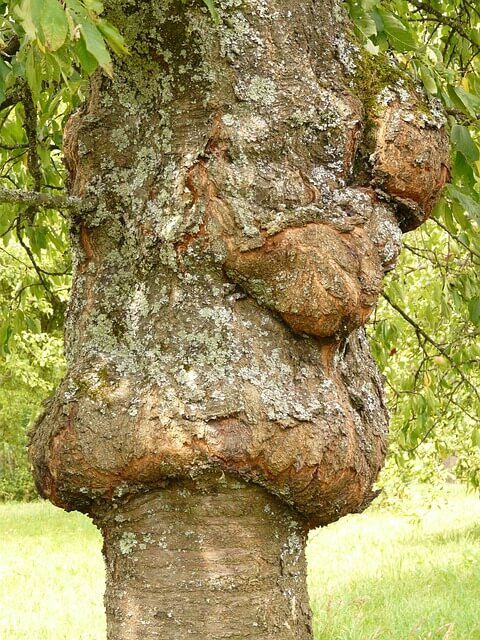
What is a Tree Canker & What Tree Diseases Cause It?
Tree cankers are known for being easy to spot due to how misshapen and unsightly they can make a branch or trunk look compared to the rest of the foliage. But the reason behind them can be harder to pin down and more difficult to diagnose.
Luckily for those dealing with such problems, Safari Tree has plenty of experts who can break down the question of what a tree canker is and what can cause this to appear on your trees.
What Is A Tree Canker?
Tree cankers are dead areas of bark found on a tree’s trunk, branches, or twigs that look sunken and discolored. And while several different outside agents can cause it, the canker will open the tree up to further bacterial and fungal issues. Insects will also pounce on any weaknesses found in the bark and can cause further damage to this area.
The severity of tree cankers can range from minor to severe. In some cases, cankers may remain small and have little effect on the tree’s overall health. However, cankers tend to affect trees already weakened by another ailment, such as poor soil nutrition, drought, or temperature issues, at a higher rate. At the same time, healthier trees have a much better chance of avoiding severe damage.
Hardwoods are known to be more adversely affected by canker diseases than conifers, but even established shade trees or young fruit trees can be weakened over time by untreated or spreading cankers. In more severe cases, cankers can grow larger and spread, causing the tree to become stunted, weakened, and eventually die.

What Tree Diseases Cause Cankers?
Cankers are usually caused by fungal infections entering a tree due to physical damage or pest infestations. In severe cases, tree cankers can cause significant harm to the tree’s overall health and structure and even lead to its death.
Fungal infections are the most common cause of tree cankers and spread through various fungi, including Botryosphaeria, Nectria, Phomopsis, and Sclerotinia. These infections enter the tree through wounds in the bark, blocking the flow of water and nutrients, causing the bark to die and form a canker. Common cankers include beech bark disease, Phomopsis juniper canker disease, chestnut blight, and walnut canker disease.
Physical damage leaves openings for infection, which can also happen over time through pests and routine garden maintenance. Some insects will cause extensive damage to a tree’s bark by boring into the tree and laying eggs, hatching into larvae that feed on the tree’s sapwood. Over time, this feeding weakens the tree, causing it to develop cankers.
Preventing Tree Cankers
To prevent tree cankers, keeping them healthy and free from stress is essential. This will include keeping up a watering regime, fertilization, and pruning to encourage vigorous growth. In addition, trees should be protected from physical damage, and wounds should be treated promptly to prevent infection.
If a tree does develop cankers, several steps can be taken to help it recover. In some cases, pruning the affected area may be all that’s necessary. However, fungicides may be needed in more severe cases to control the infection. If the tree cankers become too severe, the tree will need to be removed.
Planting trees native to your region will help them become established quicker and reduce the risk of cankers and disease. Preventing cankers is the best policy when planning for future maintenance, and this means establishing a sensible plan to avoid your trees from overexposure and stress.
Let Safari Tree Help With Your Tree Maintenance
We can help with your essential yard maintenance decisions and determine how best to protect your trees year-round from the worst pests and diseases. To get a free estimate, contact Safari Tree today.





